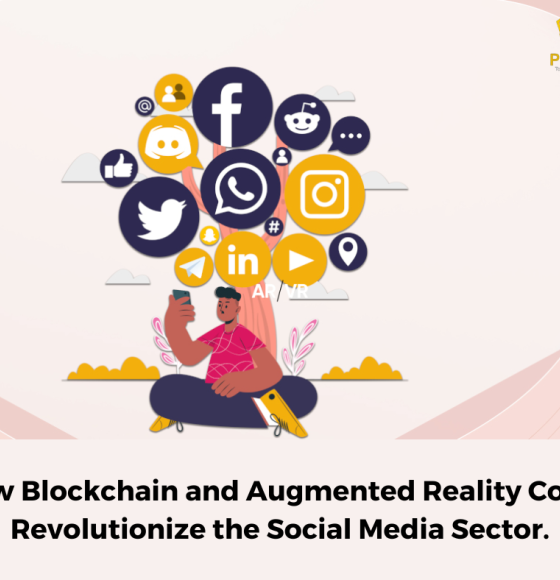While AR adds computer-generated images, figures, and landscapes to the actual world to provide users a more realistic experience, VR refers to constructing an entirely new virtual environment that simulates the real world.
The development of augmented reality technology is gradually changing a number of sectors, including marketing, manufacturing, and healthcare. Nevertheless, a wide range of brand-new industries are emerging to make use of this cutting-edge technology, none more so than the social media sector.
Augmented reality (AR) has dominated the social media space for the past ten years or so, with platforms like Snapchat, Facebook, and Instagram embracing this cutting-edge technology. Today, billions of people utilize augmented reality (AR) to improve their posts and pictures. Aside from social networks, the Pokemon Go game is the most significant application of augmented reality to date. This game lets players hunt for rare Pokemons throughout their surroundings and landscapes.
How is augmented reality affecting various international industries?
From e-commerce to branding, education, and gaming, integrated augmented reality is already a significant component of many international sectors. To assist customers try on things like apparel, accessories, furniture, and makeup before making a purchase, e-commerce merchants have widely adopted AR technology. This has increased consumer trust in their purchasing decisions.
Additionally, schools are embracing more and more interactive learning strategies, utilizing augmented reality (AR) technology to give students immersive learning experiences, from exploring 3D models of challenging subjects to interactive history lessons at historical sites and training simulations in fields like medicine and aviation.
However, mobile AR games like Pokemon GO demonstrate the gaming potential of AR by developing a fresh method of game play where a player exercises while engaging in a virtual gaming environment.
The most widely used use of augmented reality technology, which results in a widespread uptake of the technology globally, is still social media. The technology is changing the social media sector, from AR filters and lenses to AR commerce, a revolutionary aspect of the technology on social media platforms.
Blockchain Technology with Augmented Reality: Using Digital Data In The Real World
Despite the enormous expansion of AR, ongoing issues that plague the Web 2 era of the internet are also limiting this technology’s development. The largest issue is data ownership and control.
Unique online personas:
Through the use of non-fungible tokens (NFTs), which each represent their own unique properties and value, blockchain technology introduces asset uniqueness. For instance, the development of 3D objects for usage on social networking platforms is possible using Cappasity, a decentralized AR/VR ecosystem for 3D content exchange and e-commerce.
This might enable social media merchants to produce distinctive 3D items that give customers an engaging virtual buying experience. These 3D content producers may now develop, rent, and sell distinctive 3D images directly on the Cappasity marketplace thanks to blockchain technology.
A decentralized social media future:
Peer Inc. is another notable Web 3 business that attempts to combine social networking and augmented reality on a decentralized platform. Through its recently released Peer SuperApp, which includes an AR-powered social platform (Peer Subspace), AR glasses, and AR headsets, the company aims to bring the immersive experience of AR to decentralized social platforms.
Every social media user who uses the company’s decentralized federated identity (DFI) can own their complete digital footprint, including all of the social and media information they’ve gathered over the course of their lives. Users can also generate public utilities (access tokens) to their data, reducing their online risk by eliminating the need for them to reveal their DFI with every service they sign up for.
On top of its high-tps blockchain, Peer Inc. is also developing the AR-based social media network Kudzu. Given the immutability of blockchain technology, the network seeks to address issues with current social platforms like echo chambers, fake news, and disinformation. Every user will be able to own their data on the platform and monetise it anyway they see fit.
Future of blockchain and augmented reality in social media:
Social media is always changing as technology, human inventiveness, and our desire to interact with one another advance.
Due to the massive amount of data that social media platforms collect, the development of decentralized social platforms like Cappasity and Peer Inc. will drastically change the AR social media landscape by removing the complete control that big data companies currently hold over these platforms and enabling users to own and monetize their data. Additionally, copyright infringements are not a concern for those who generate original and verifiable virtual assets for augmented reality entertainment.

















